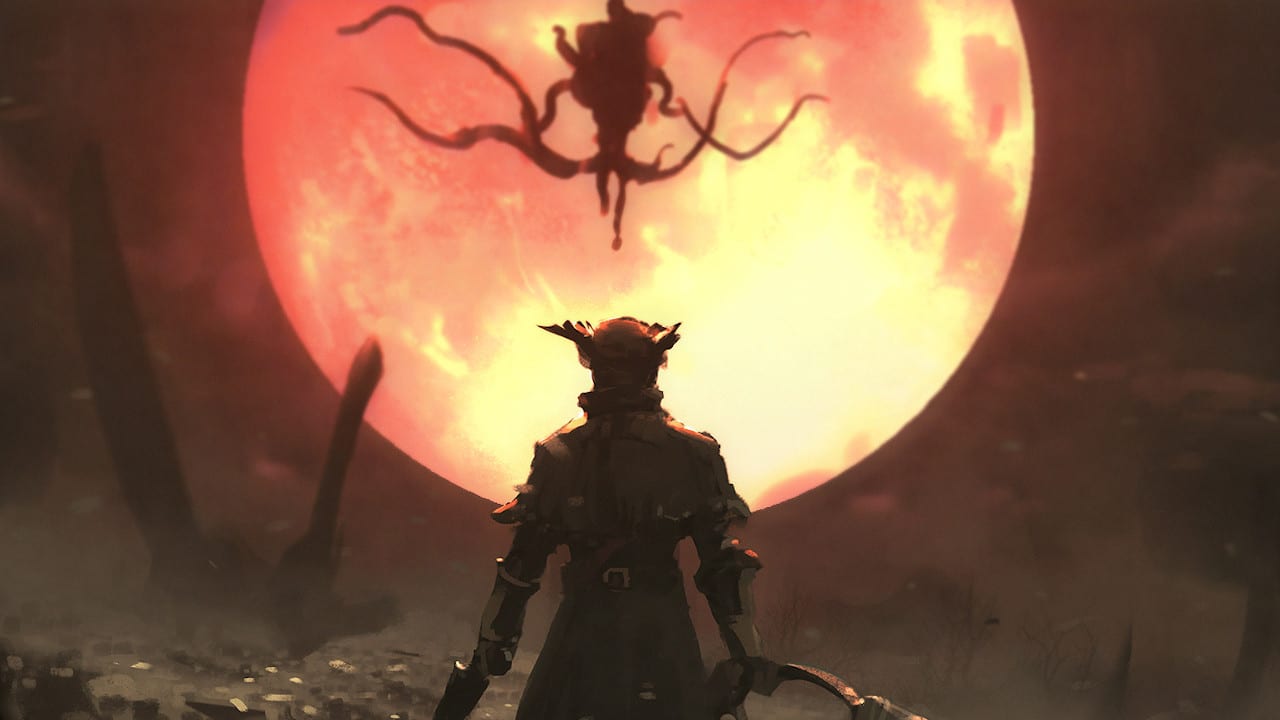Even as you are beaten to a bloody pulp by some horrific creature, you can’t help but notice the beauty in From Software’s action RPGs. Whether you’re playing Dark Souls or Bloodborne, there’s a peculiar, dignified gravitas to those brutal, sinister worlds. In a famous quote from the Dark Souls Design Works book, artist Masunori Warugai remembers being admonished by director Hidetaka Miyazaki after producing an especially repulsive creature design:
Miyazaki handed it back to me saying, “This isn’t dignified. Don’t rely on the gross factor to portray an undead dragon. Can’t you instead try to convey the deep sorrow of a magnificent beast doomed to a slow and possibly endless descent into ruin?"
There’s a sense of awe behind this concept, of making the player witness something far grander than themselves in a degraded state, brought low by time and decay. This image is neither beautiful nor repulsive. Instead it evokes a sense of vertigo, of losing control. In the face of things too big for our limited senses and minds to comprehend, we are overwhelmed by sheer scale: the sublime.
Any subject can be sublime, whether it’s landscapes stretching to the horizon, towering mountains, the passage of time, or even a fantasy like all-powerful gods. The sublime is always threatening in a way, but it can also easily seep into the sinister or scary. In Bloodborne you’ll climb ruined cathedrals, be swallowed by impenetrable woods, stare into yawning abysses and – perhaps most importantly – come face to face with decaying creatures as ancient and indifferent as they are deadly.
The sublime was the bread and butter of the Romantics (late 18th and 19th century), the darker side of which became the Gothic horror genre - originally referred to as Dark Romanticism. Quite the coincidence because this is where we end up if we follow the twisting roots of From Software’s aesthetics. The similarities between Caspar David Friedrich’s (1774-1840) darker paintings and From’s games are undeniable, with these works often dominated by Gothic architecture towering over skewed tombstones, neglected graveyards, and tiny, shadowy figures. If it isn’t a man-made cathedral or abbey that’s doing the towering, nature’s tall trees or distant mountain ranges perform the same function.
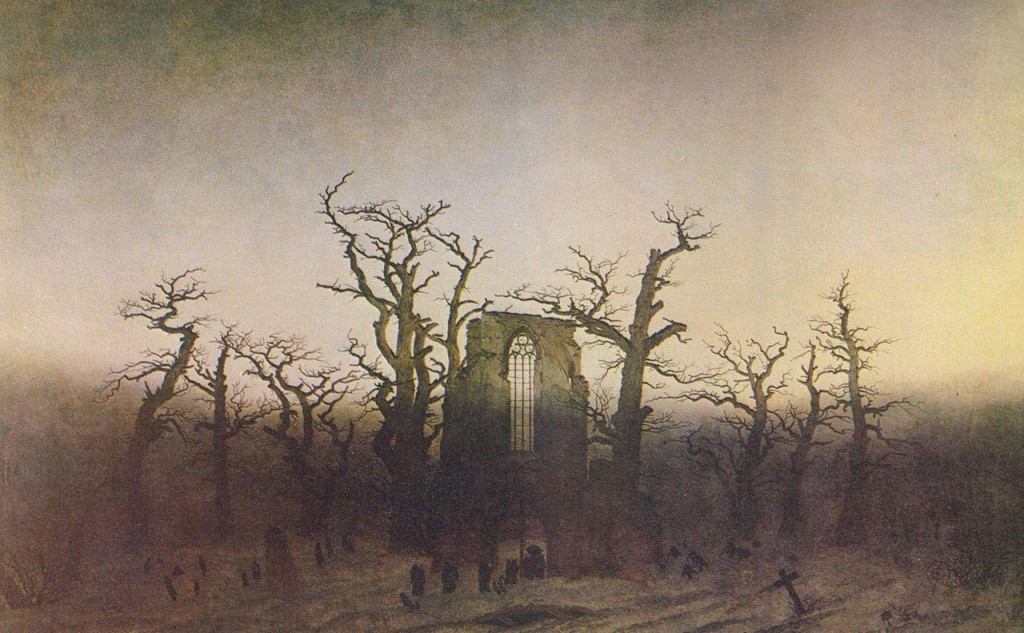

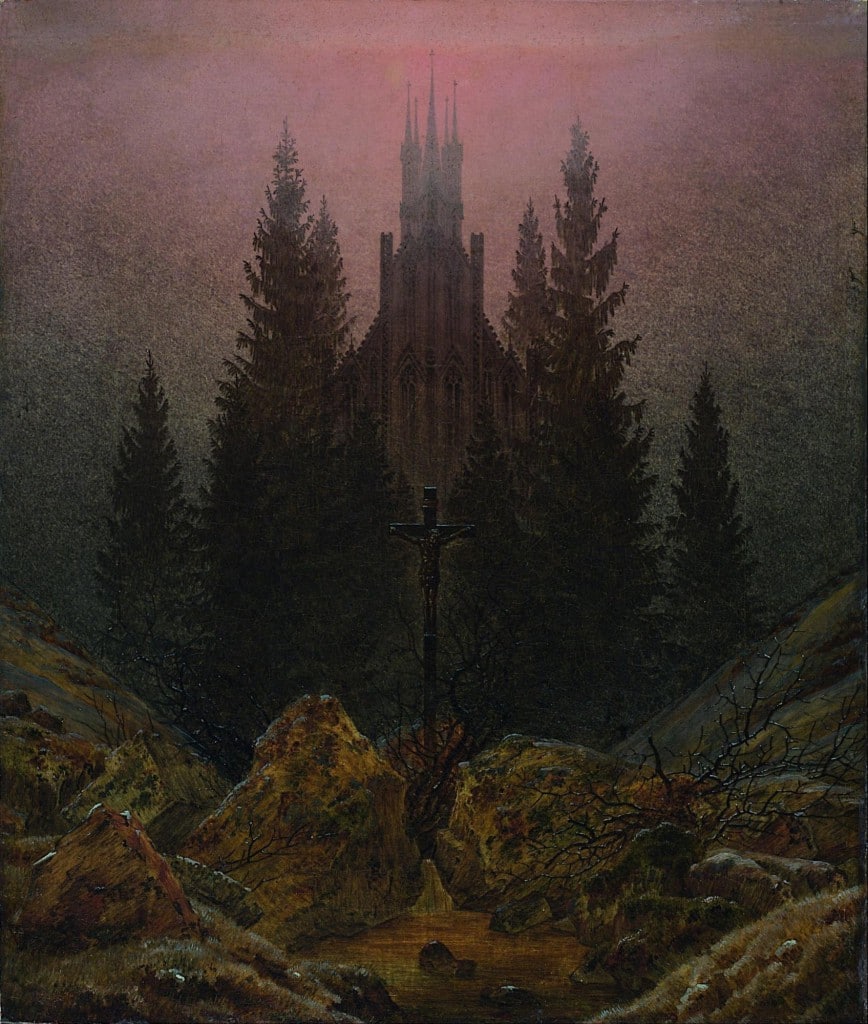

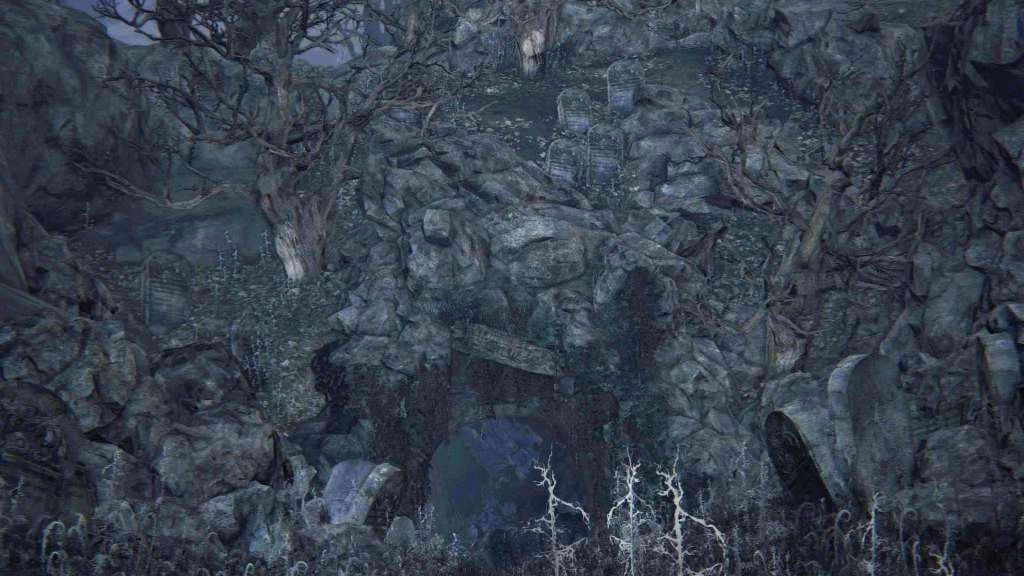
If you’ve spent even a short time playing Bloodborne, you notice that the moon, hanging low and oppressively in the night sky, is a constant presence throughout the game. The moon is a powerful symbol and has long been associated with gods and goddesses, lunacy (from Latin ‘Luna’), as well as cycles and the passage of time in general - we’re all living in the ‘sublunary sphere’ after all, once thought to be the one region in the cosmos affected by time and change.
Friedrich, too, must have found the moon fascinating, since it makes an appearance in many of his paintings. And as in Bloodborne, it’s an eyecatcher, claiming the center of the compositions and mesmerizing the human figures within.
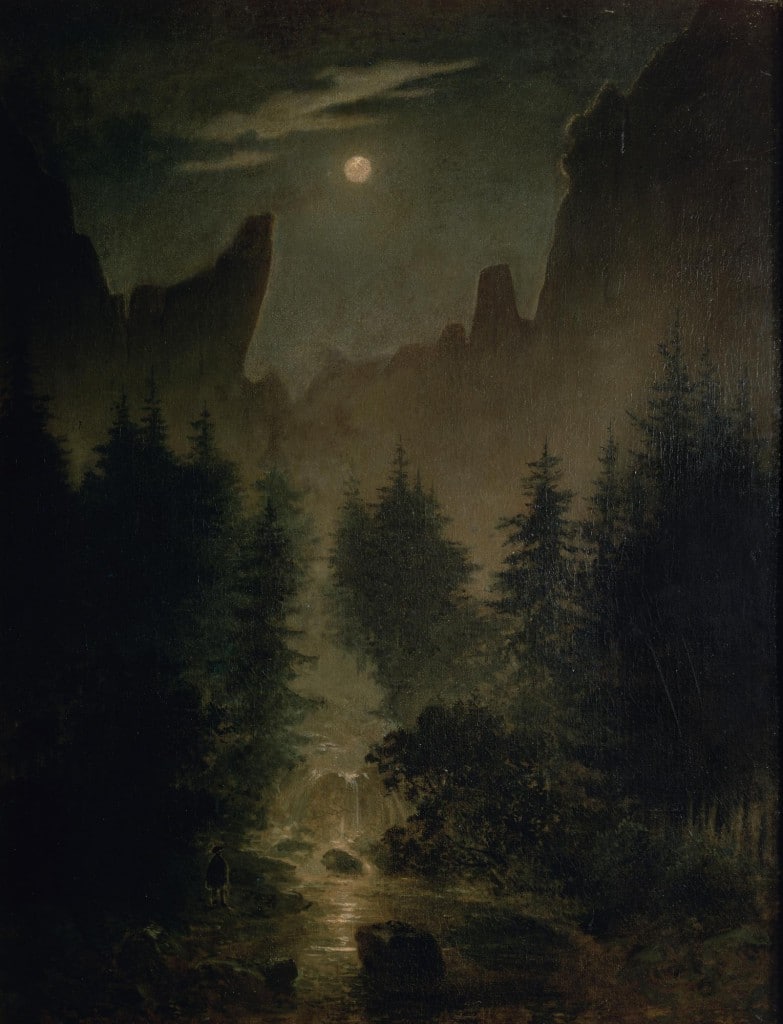
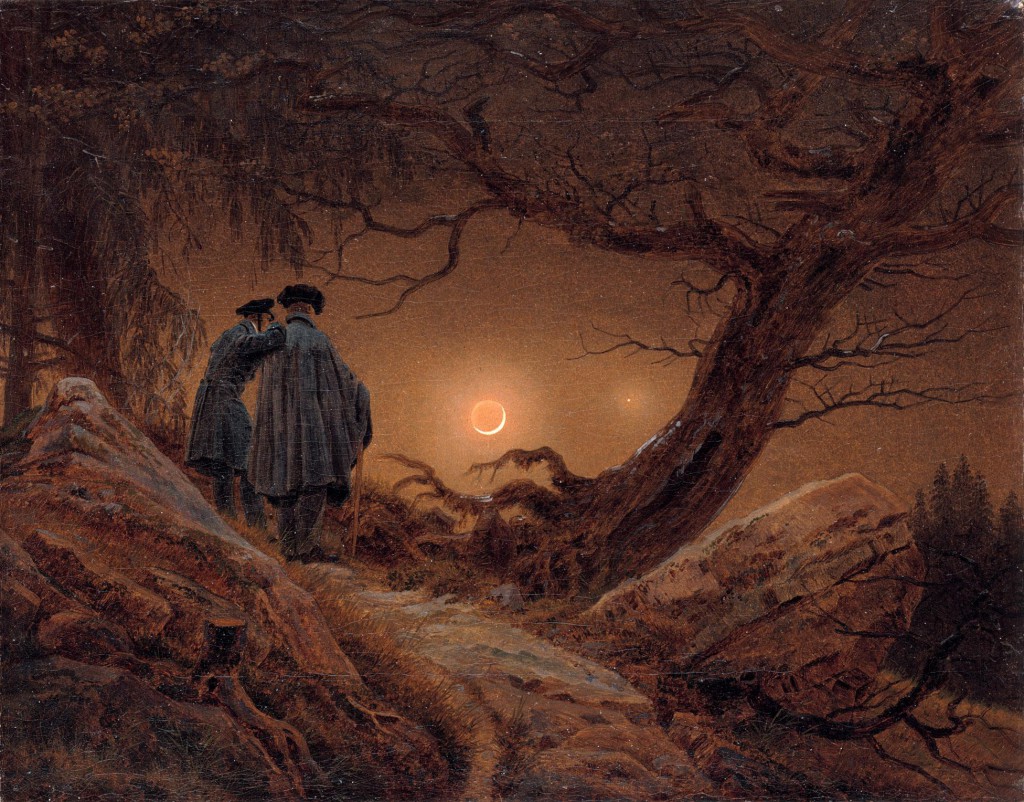
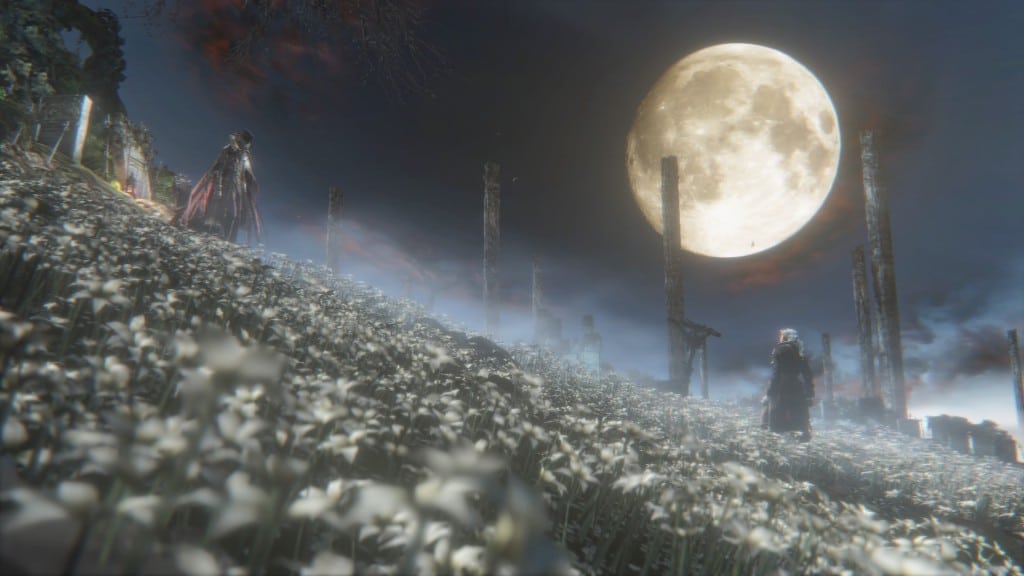
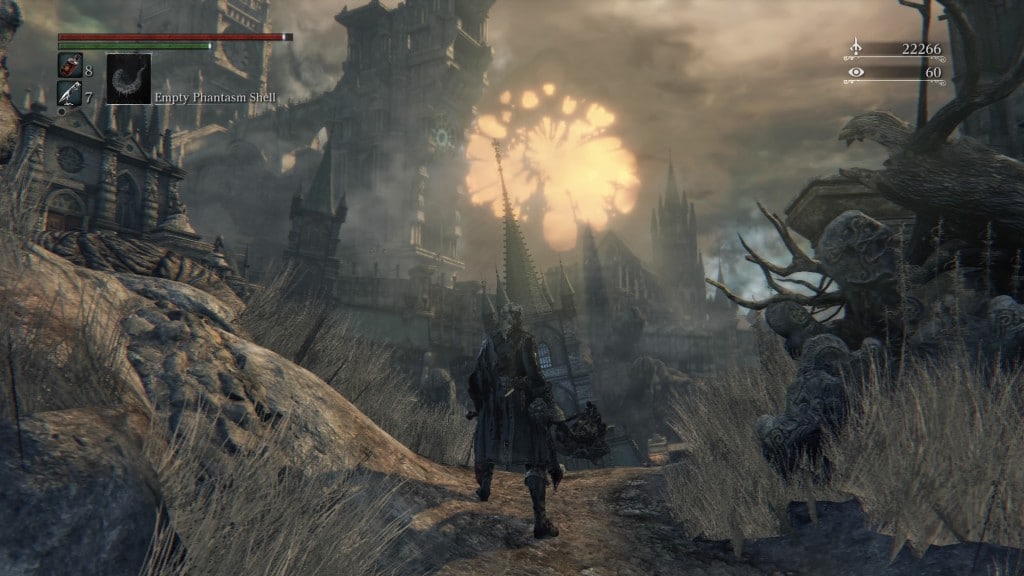

Darkness and the moon. Ruins, forests and tombstones. It’s pretty familiar stuff, a stale iconography worn down to clichés and caricatures of spookiness over time, but Fromsoft’s games show that there’s still power in these symbols. They still communicate our insignificance: we’re specks of dust, blinking out of existence in a heartbeat. How fitting for a series that throws players into an enormous, obscured world, leaving them to die again and again. Still, at least in Romanticism it’s rarely as bleak as all that. You may have noticed more than a hint of the spiritual in those paintings with their prominent abbeys, cathedrals and crosses. Humans may be pitted against something that’s far greater than they, but at the same time, they can also be part of it. And if their time is up, who knows, they may transcend space and time through faith.
Bloodborne owes a lot to Friedrich and Dark Romanticism in general, but its blackness has a different shade nevertheless. Yharnam is a very Gothic place, but there are disturbances that twist it to the breaking point, becoming more and more obvious the deeper you progress into the game. You’re probably thinking Lovecraft right now and, yes, that’s part of it - squid creatures and cosmic horror piggybacking on top of Gothic imagery, piling on the existential dread with tubes and many-eyed horrors. But there’s more to Lovecraft than tentacle monsters, and there’s much more to Bloodborne than a simple rehashing of Lovecraftian tropes. The surreal, nightmarish visions and deformations of Bloodborne have their own themes and points to make.
Let’s take a look at some paintings of the Polish artist Zdzisław Beksiński (1929-2005). The Romantics’ interest in the morbid and the sublime is still here, but there’s also a strong influence of surrealists like Salvador Dali, and a streak of body horror reminiscent of H.R. Giger’s disturbing biomechanoid creatures. Some of Beksiński’s paintings show similar subjects as Friedrich’s, such as enormous landscapes stretching to the horizon, defined by tower-like structures, tombstones and yes, even distant Gothic cathedrals rising from black fog.
But there’s very little that’s capital-R Romantic or picturesque about these images; like Bloodborne, these are deeply alien and even hostile worlds. There are evil faces on tombstones glaring back at you. The cathedral in the background is not a promise of salvation, but rather part of some threatening hellscape. The isolated, morbid creatures sitting at the top of enormous pillars don’t admire their sublime environment, but are huddled around fires, their only comfort. It’s a picture that’s familiar to anyone who ever rested at one of Dark Souls’ bonfires and discovered the ghost of another player sitting next to them, or observed Bloodborne’s messengers staring into the lantern’s fire.
[Editor's note: Beksiński’s paintings are untitled.]

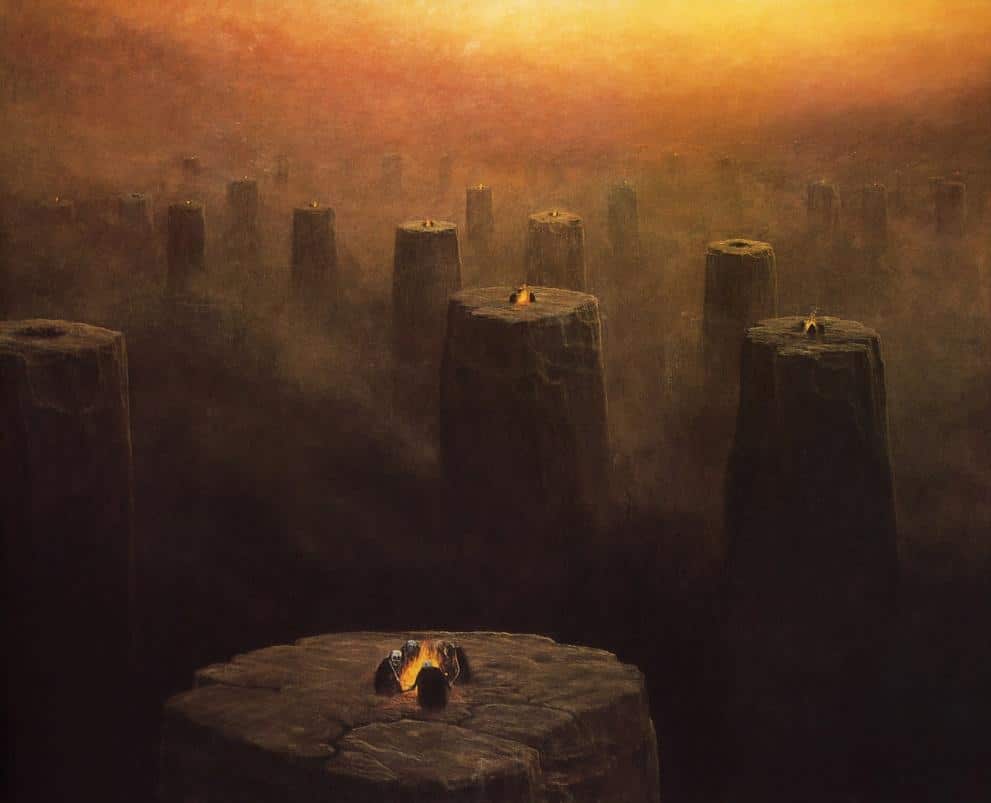
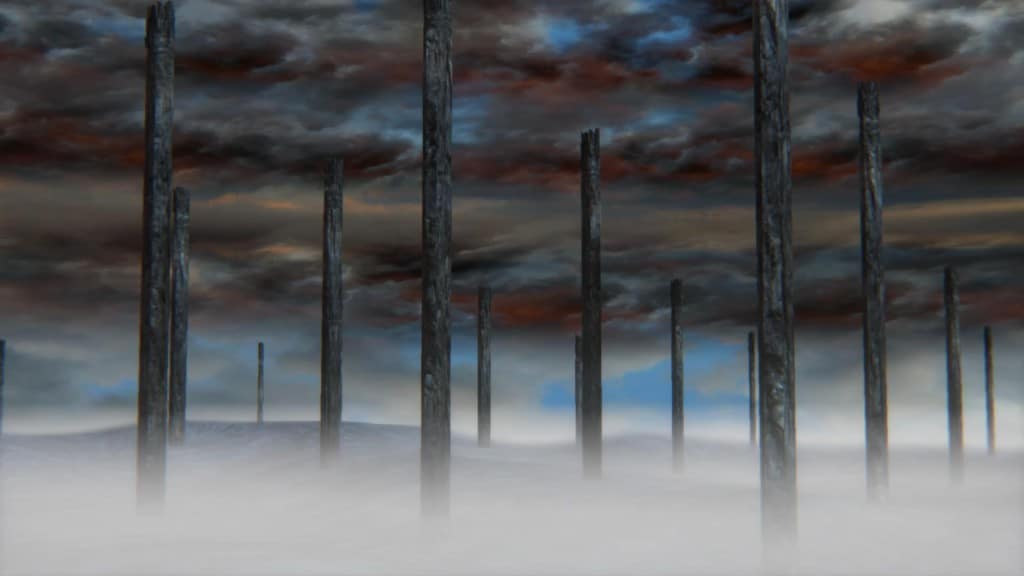
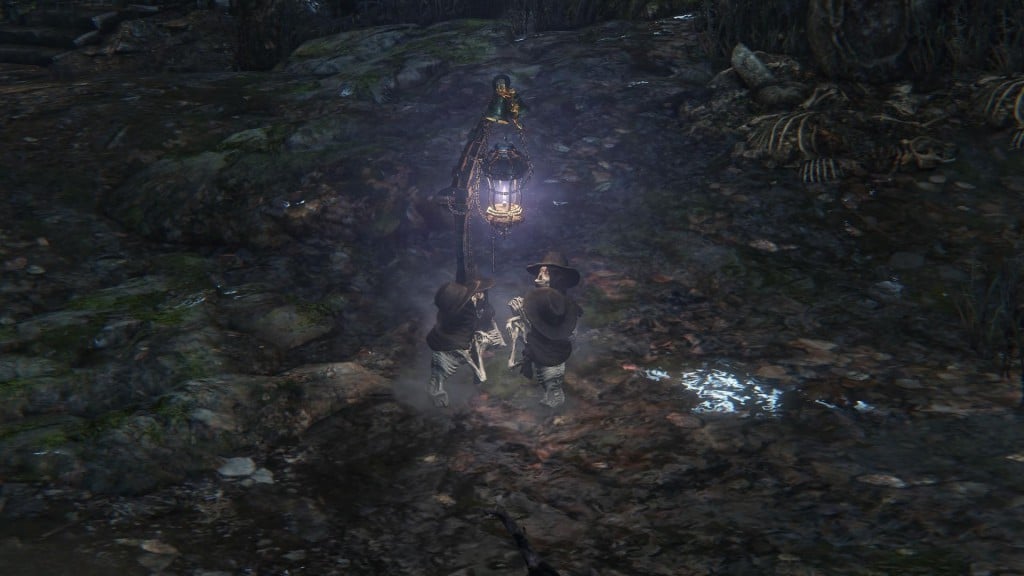
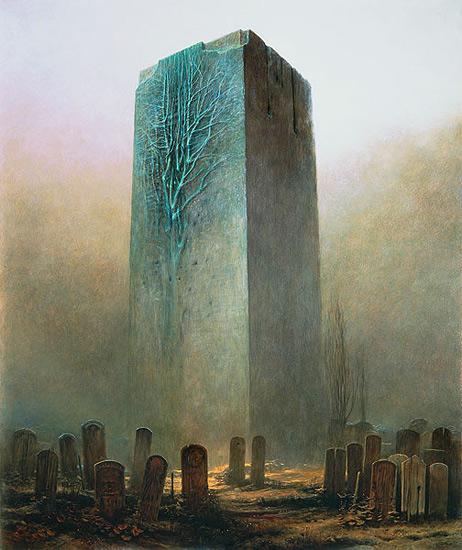
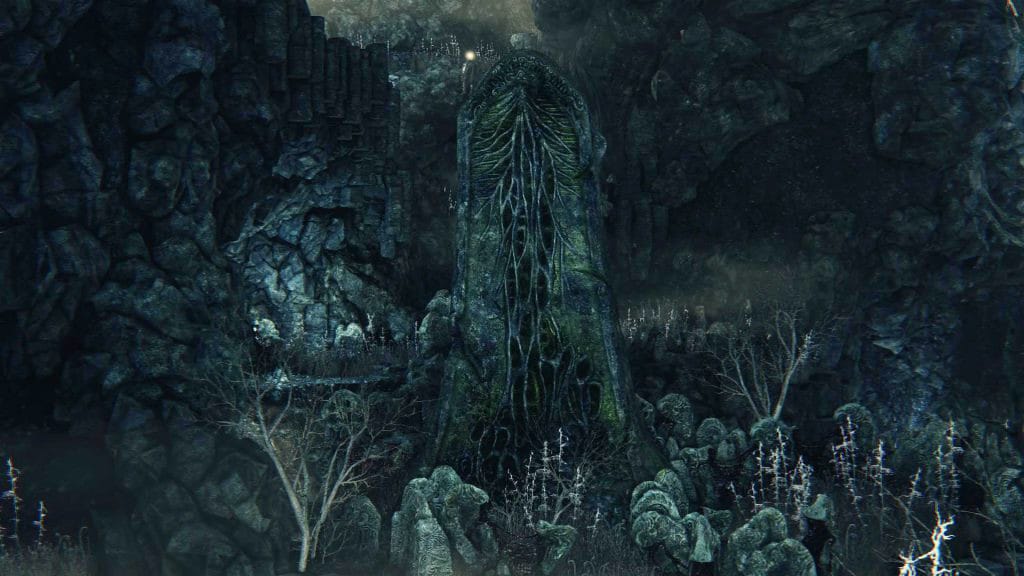
These worlds are inhabited by weird beings, ranging from distorted human figures, to utterly alien creatures, to veiny tree-like things and fungal growths. There’s little left of the human body as we know it; at the best of times, it’s a rotting corpse, but it’s just as likely to be monstrously deformed, fused into walls or to other bodies, straying into outright body horror. Just like in Bloodborne, the human body is malleable and threatened by forces that fragment, conjoin, distort, petrify.
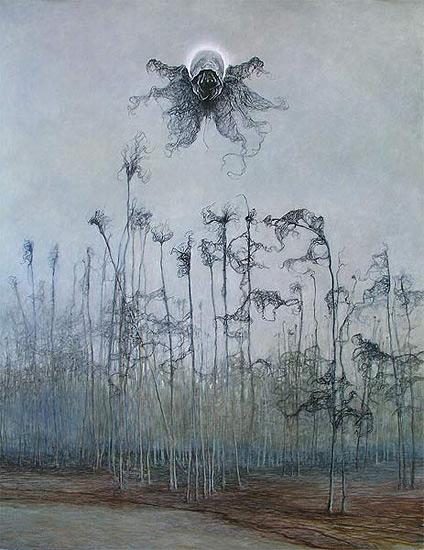
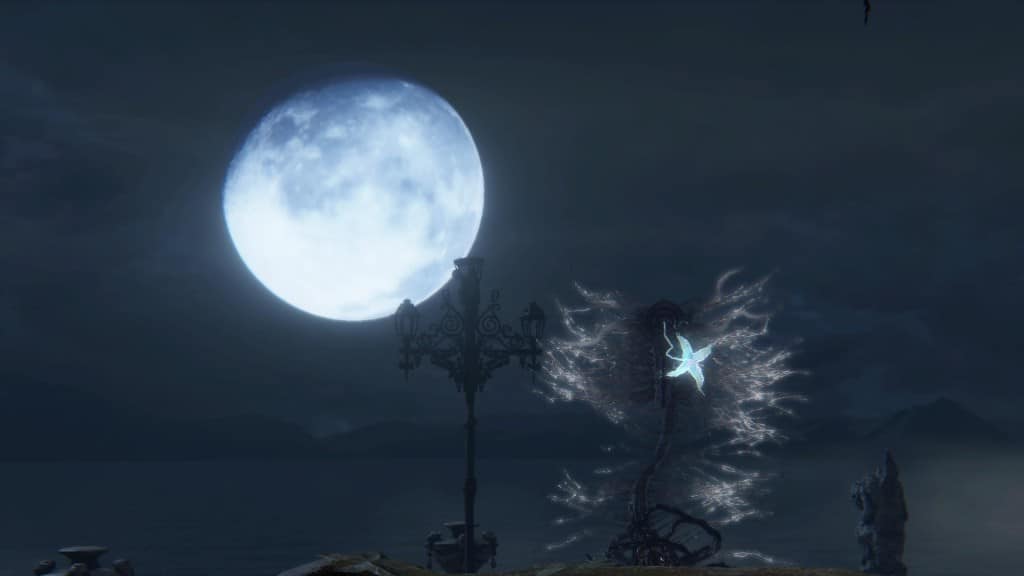
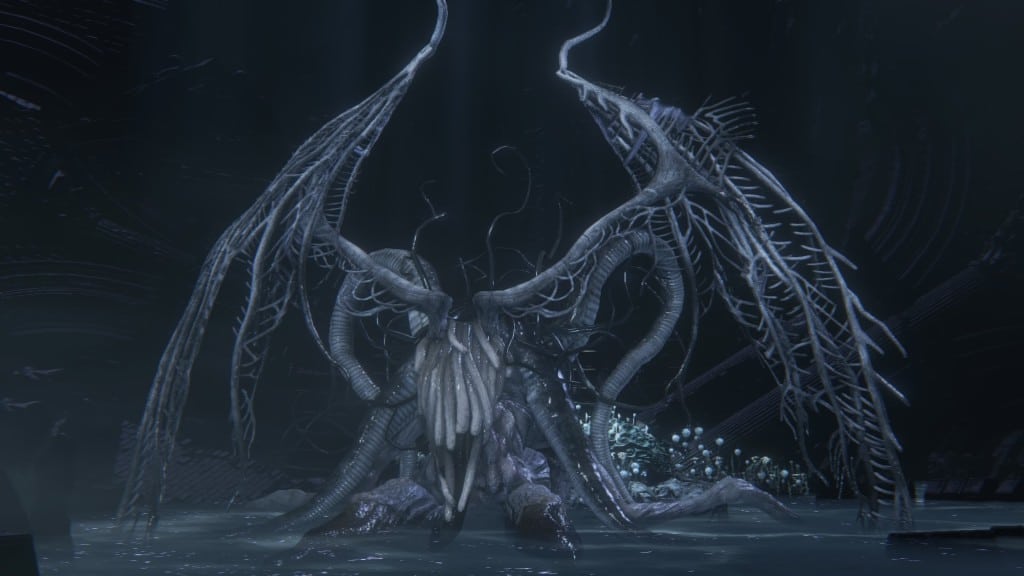
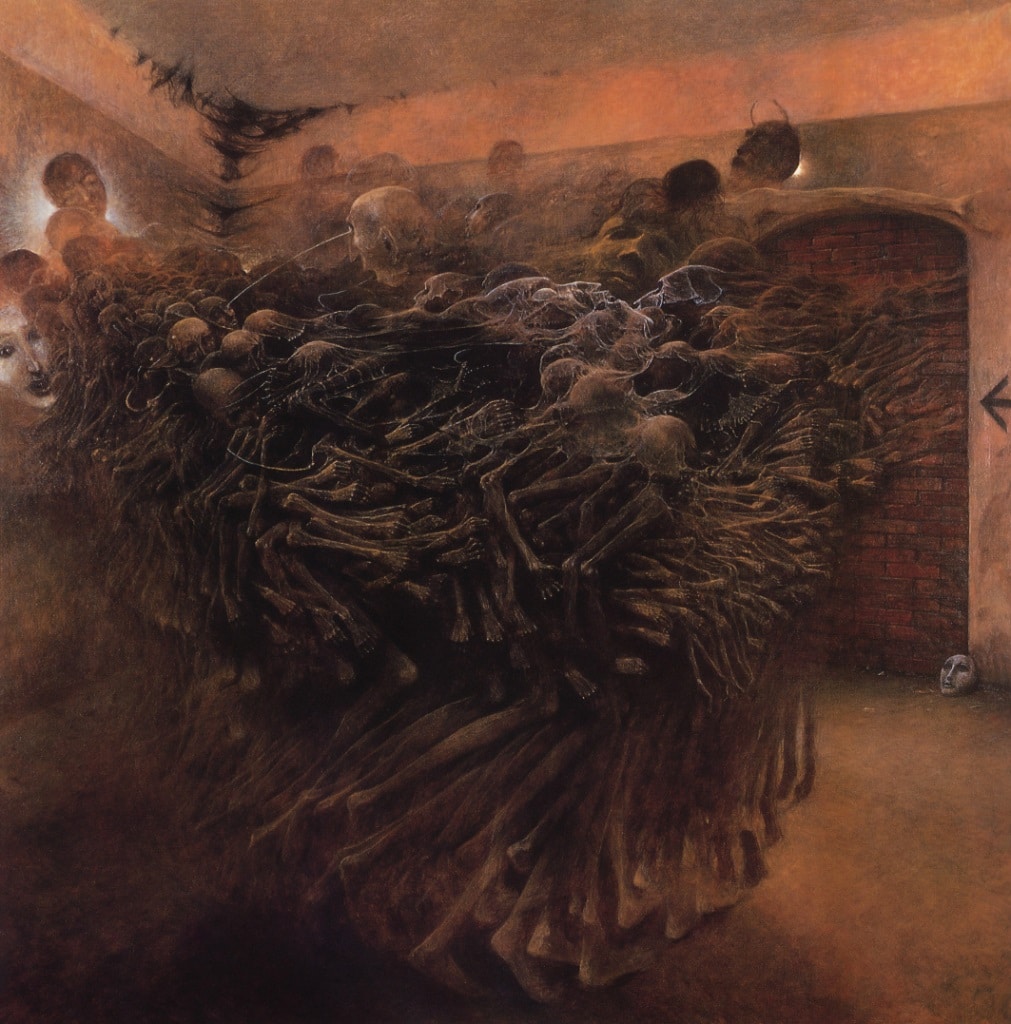
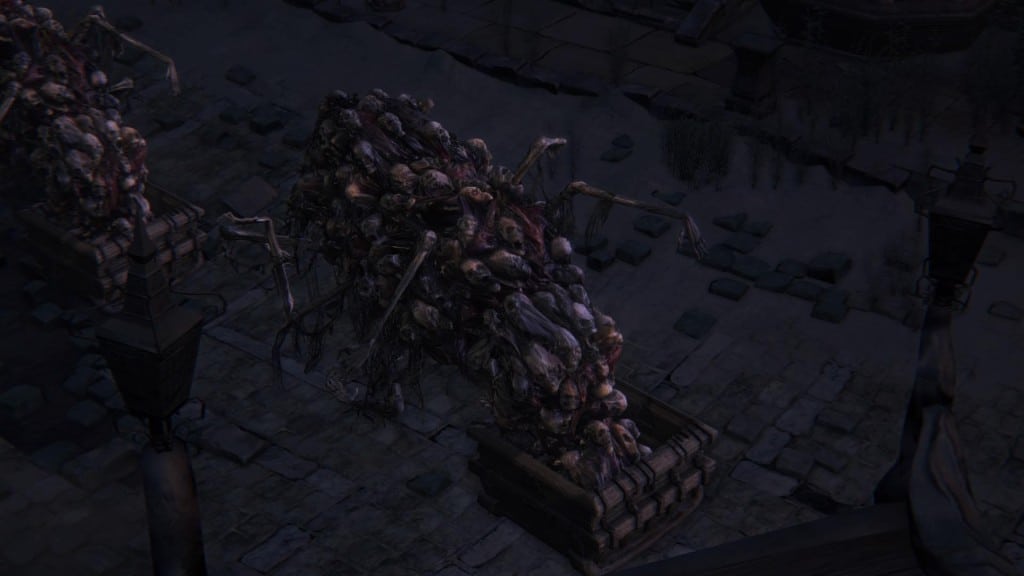
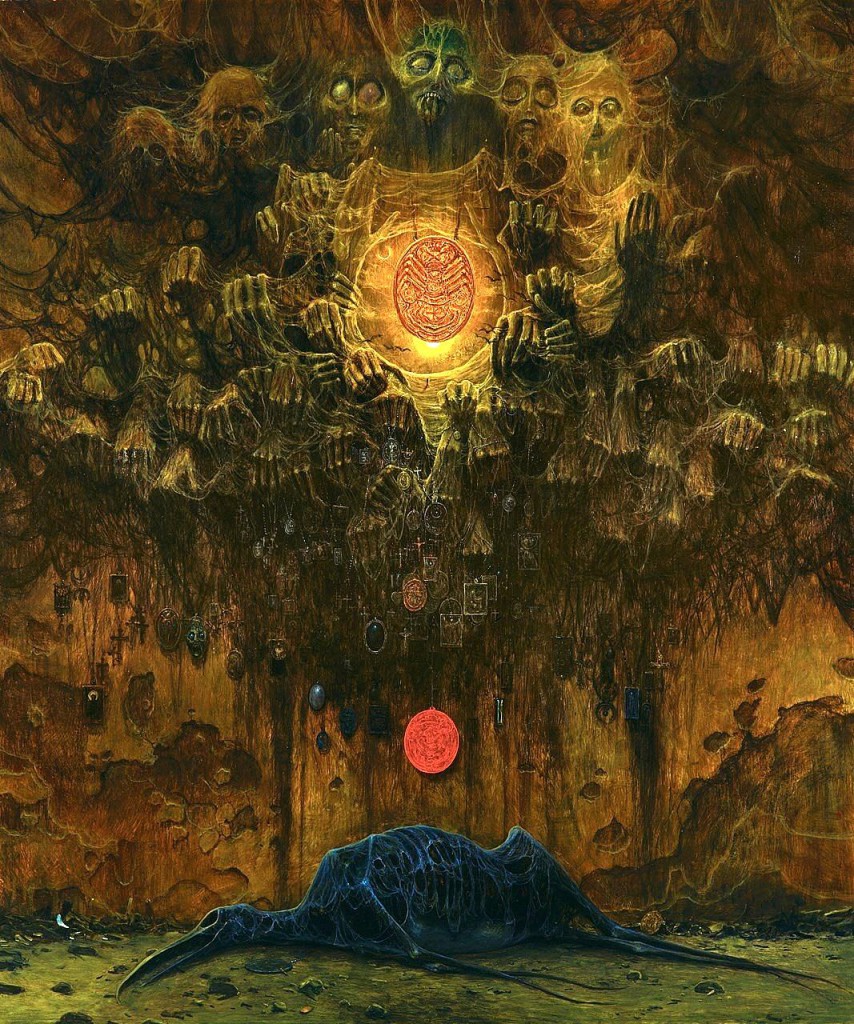
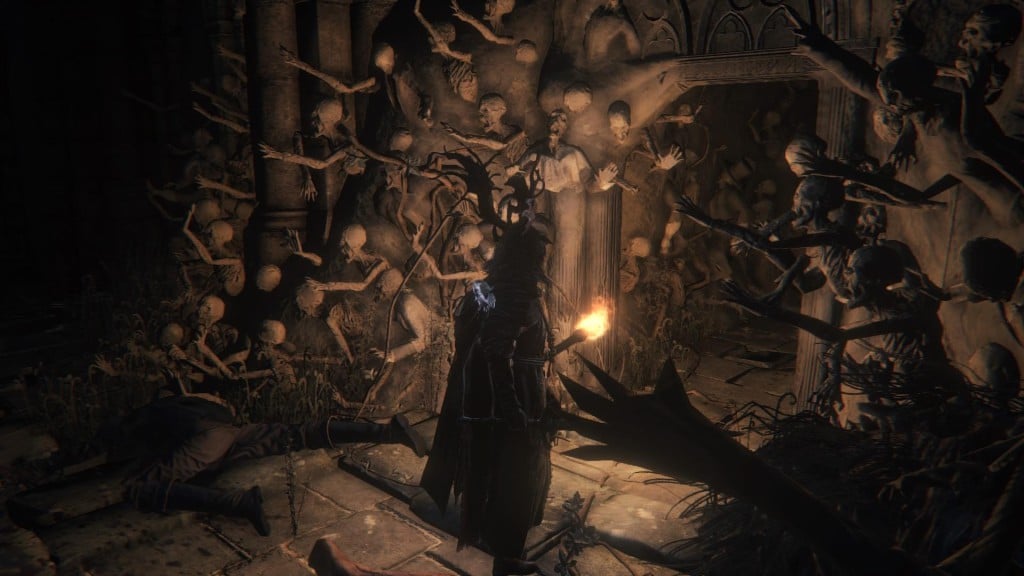
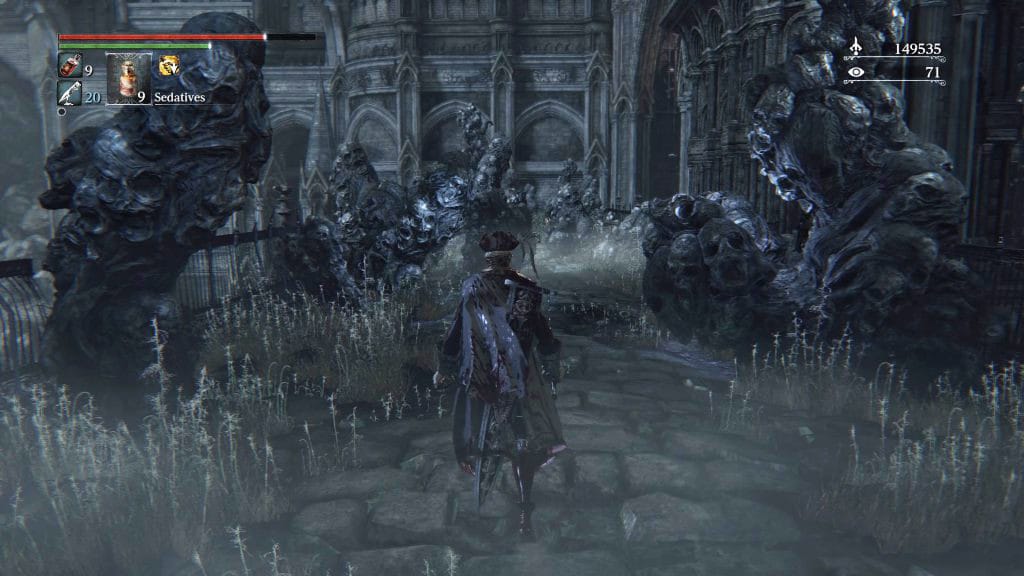
As in Friedrich, there are crosses throughout Beksiński’s nightmare visions but, instead of the body of a redeemer, they carry the ruinous and tortured cadavers of monsters whose original shape is hard to guess at. Were they punished for some crime? Or did they die innocently, leaving behind a perverse devotional picture? Yharnam’s hunters and inhabitants, too, like to present the bodies of their kills on crosses - but when the player meets these people, they can hardly be distinguished from the beasts they hunted. And as your actions throughout make clear, perhaps the player’s hunter is no savior fighting for Yharnam’s soul - but just another blood-crazed beast.
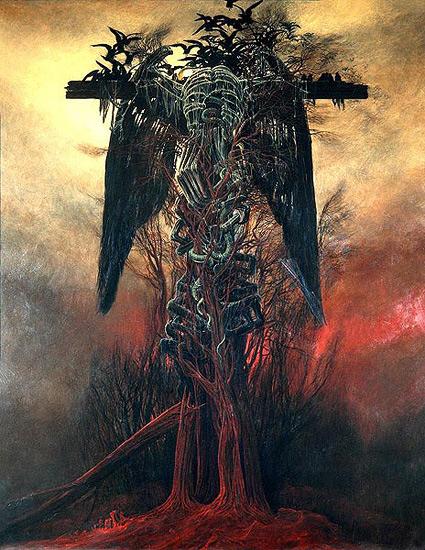
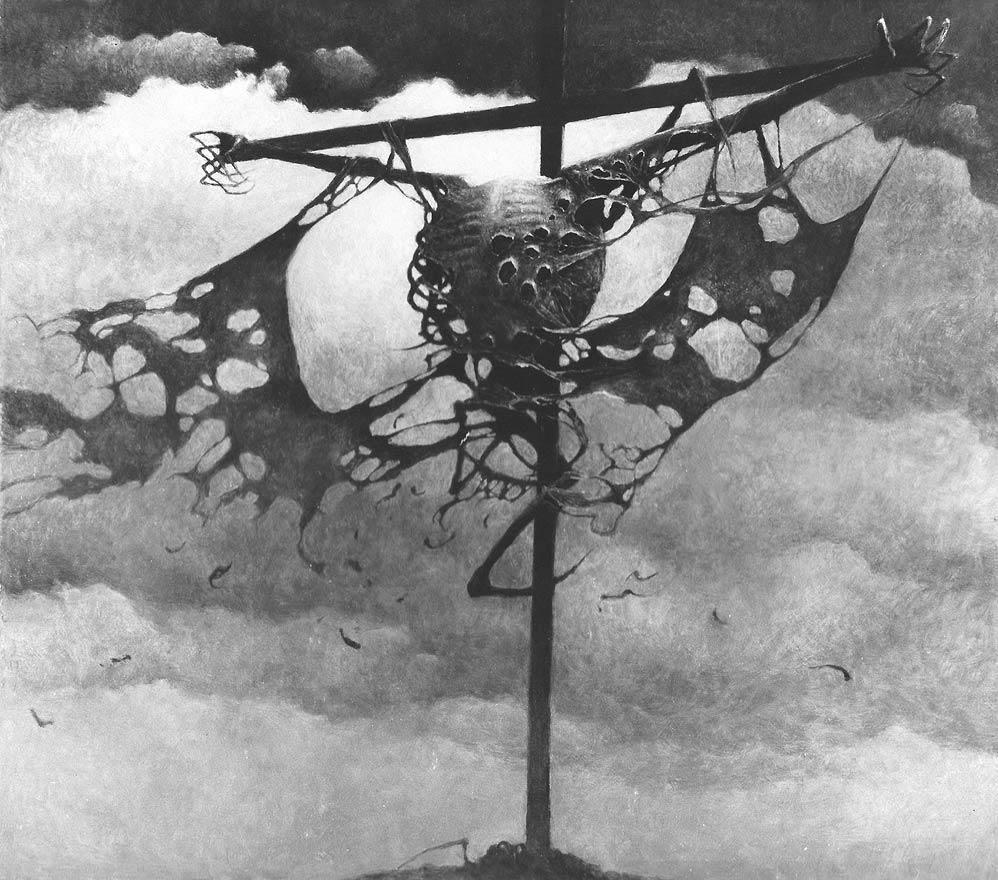
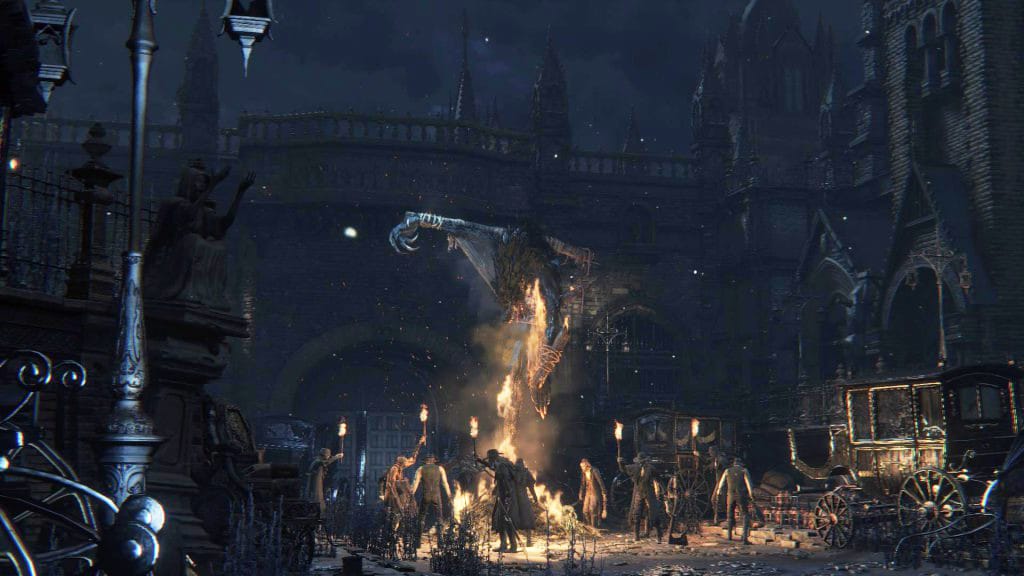
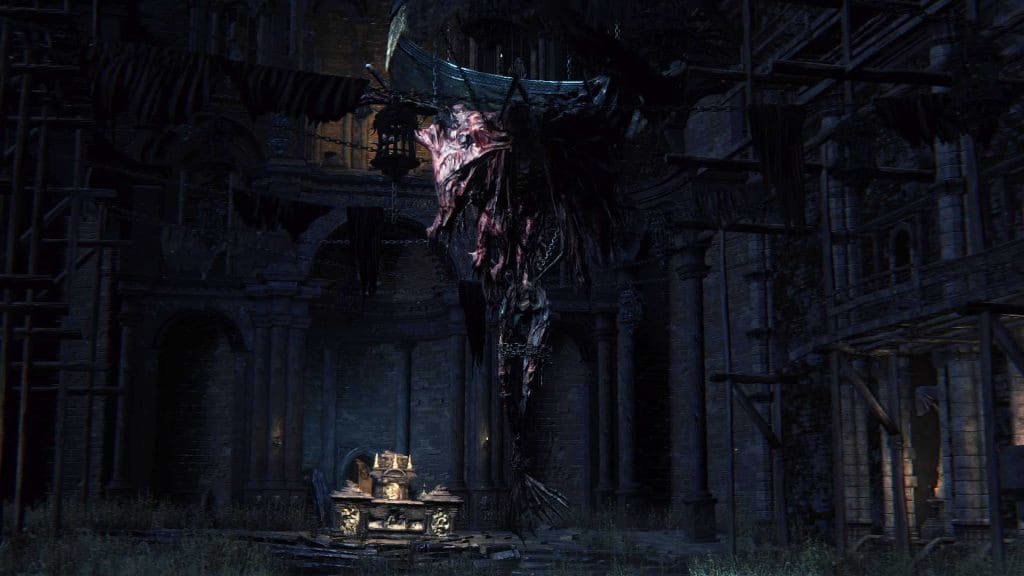
Yharnam is full of churches, altars, and devotional statues of creatures praying to powerful cosmic beings. The people of Yharnam sought transcendence through these Great Ones, and in a manner, they succeeded, being transformed into beasts and madmen. The giant moon, first pale, later red, is a symbol for these crushing cosmological powers bearing down on Yharnam. Dead members of the School of Mensis can be found collapsed in chairs facing the moon, having died while seeking communion with the cosmos. The moon can also be found in countless of Beksiński’s paintings, bringing with it portals to different worlds that might bleed into others.
In one painting, a red moon hangs over a doorway that is crowned by coiled tentacle shapes. Beneath, an eyeless skull encircled by some snake-like creature grins madly. Another image is a pretty striking echo of Bloodborne’s blood moon appearing over the Moonside Lake after the defeat of Rom, the Vacuous Spider. And another scene even presents a lonely figure sitting on a chair, exposed to the cosmos unveiling itself above.

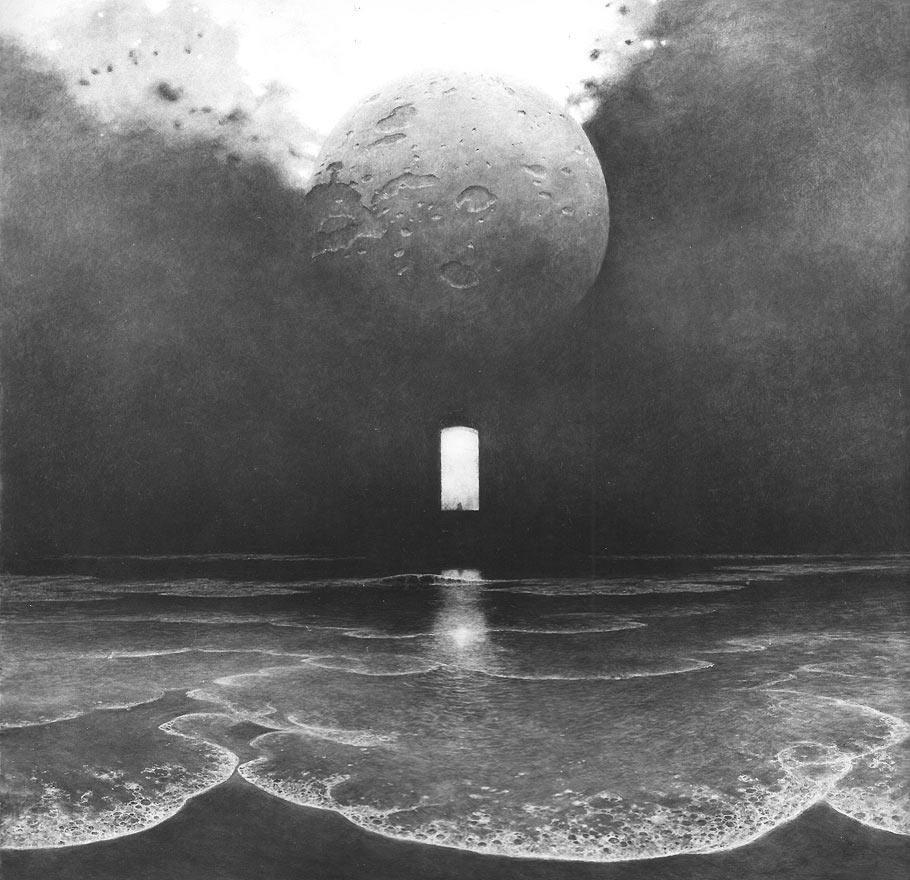
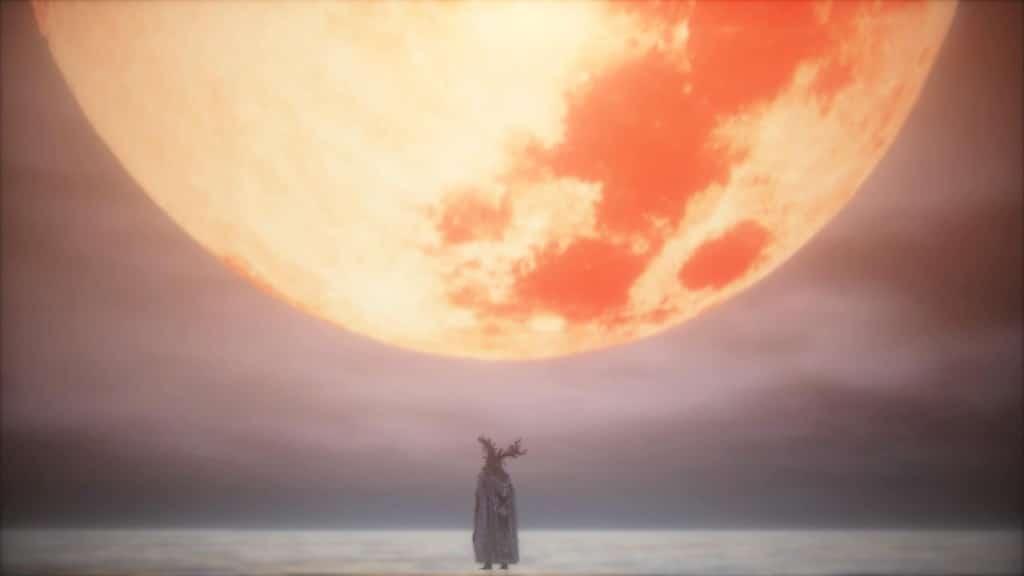
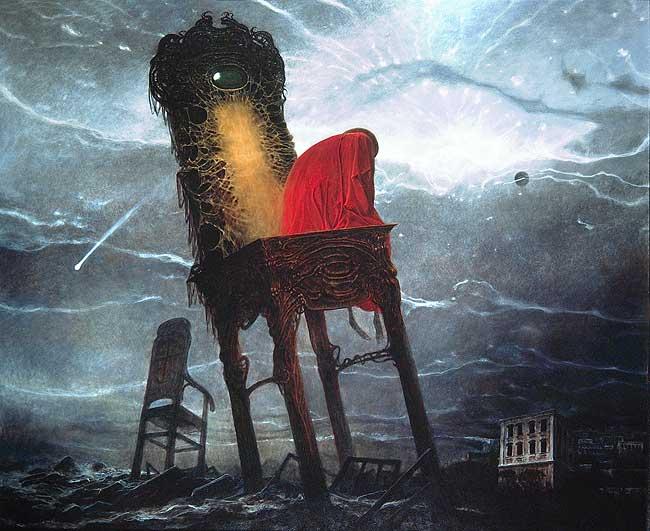
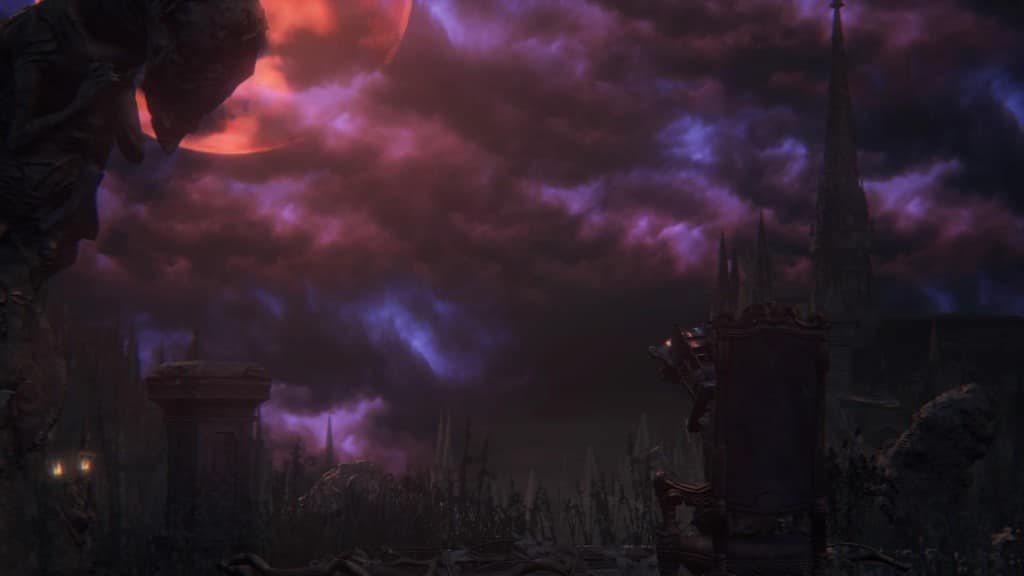
Friedrich and Beksiński have a lot of common ground due to their interest in the dark and the sublime, but their aesthetic style remains at odds. Beksiński does away with all stable points of reference: there’s no place for benevolent gods or an ordered universe in his art, and transcendence isn’t a promise, but a threat to everything that makes us human (if there even is such a thing as a human body or mind to begin with).
The opening acts of Bloodborne may seem almost quaint with its large pale moon, its Victorian architecture and creatures that look like they’ve escaped from the Hollywood set of some old horror film. But once you’ve come to the end, Yharnam has been transformed into a very uncanny place where little seems certain anymore. There’s no sense left of what’s reality or dream, right or wrong, dead or alive, human or beast. Even time has lost its meaning.
If Friedrich’s Gothic aesthetic is the body of Bloodborne’s world, then Beksiński’s cosmic horror is an out-of-control growth, feeding off this body and eventually devouring it whole. Bloodborne is firmly rooted in the soil of Dark Romanticism, but its tendrils stretch further and entwine the nightmare visions of the 20th century - the final result is a testament not just to its artistic inspirations, but to Fromsoft’s ability to reinvent them in a new medium and a new era.
